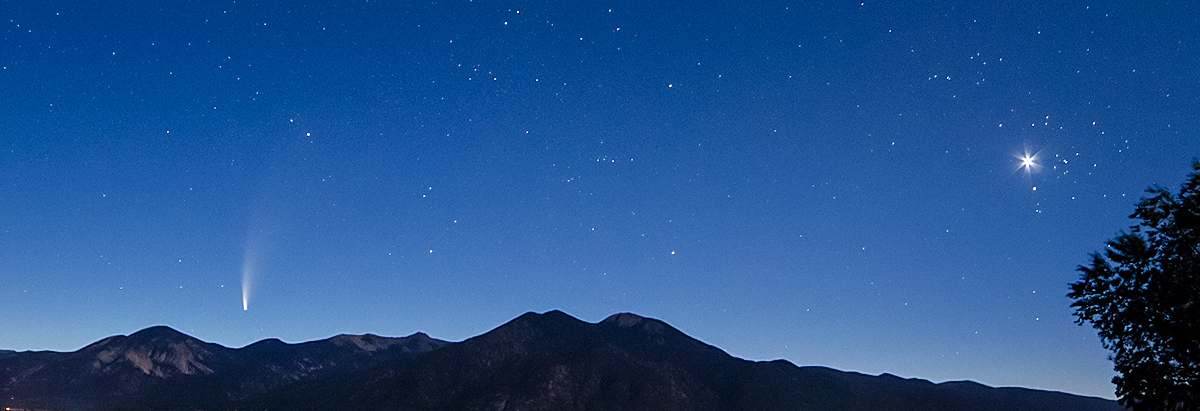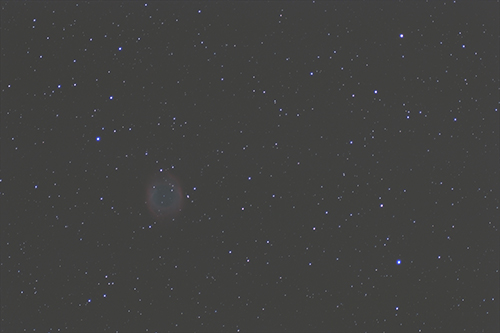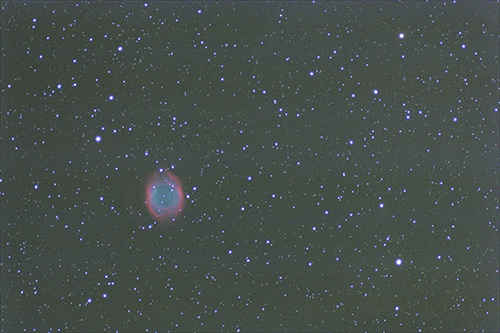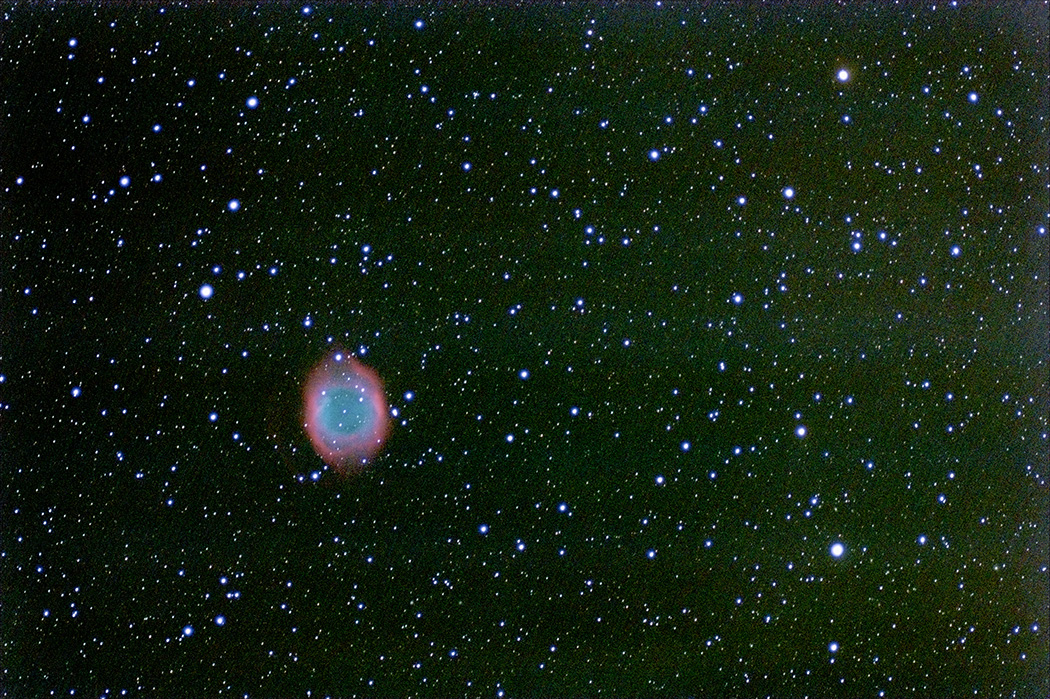
Welcome to taosastronomer.com!
offering
local "hands-on" observing
(visual and imaging) sessions and instruction
viewing and imaging from Rabbit Valley Observatory
a dark sky location on the mesa just west of Taos, NM
 |
 |
Helix Nebula (NGC 7293) / after stacking and combining in DeepSkyStacker software but before any output or post-processing. I've linked several times to either DSS's download website or to on-line tutorials that may be helpful. |
Helix Nebula (NGC 7293) / after stacking and combining in DeepSkyStacker software and after adjusting the saturation tab (20% in this case) but before any additional output or post-processing in Photoshop CS3. |
 |
Helix Nebula (NGC 7293) / after stacking and combining in DeepSkyStacker software after adjusting the saturation tab (20% in this case) and also after additional post-processing in Photoshop CS3. Various filters and actions were then taken within Photoshop, including adjustments using the "curves," "color balance," "levels," "exposure" and "anti-noise" tabs. The final result is profoundly different than the originals out of the Canon camera; these results certainly a testament to the advances in photography during the digital age. Such adjustments were simply not possible even a decade ago! To access further anti-noise enhancements and the process used, please click this text.
All of these actions are very subjective, raising the question of what is the true color and appearance of the astronomical object. My goal is to produce a relatively accurate and pleasing image of the subject. Hopefully this final image above represents that! |
|
To correctly and accurately view images such as those seen on this website, it is important to adjust your computer or device's monitor to the neutral gray scale above. First of all, every sector seen above should appear to be shades of a neutral gray -- gradually moving from black to white -- further, each segment should be independently visible, not "oozing into" one another. When your device is correctly calibrated (not so difficult) you will be able to view the images as they were created and intended to be seen. |
(all content copyright 2015-2019 Willis Greiner Photography, all rights reserved)